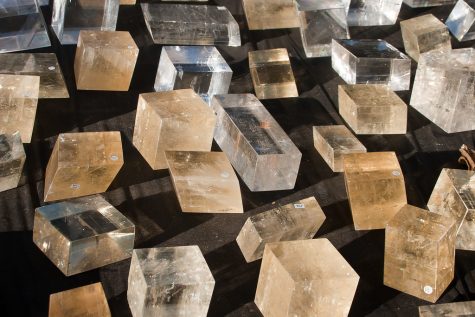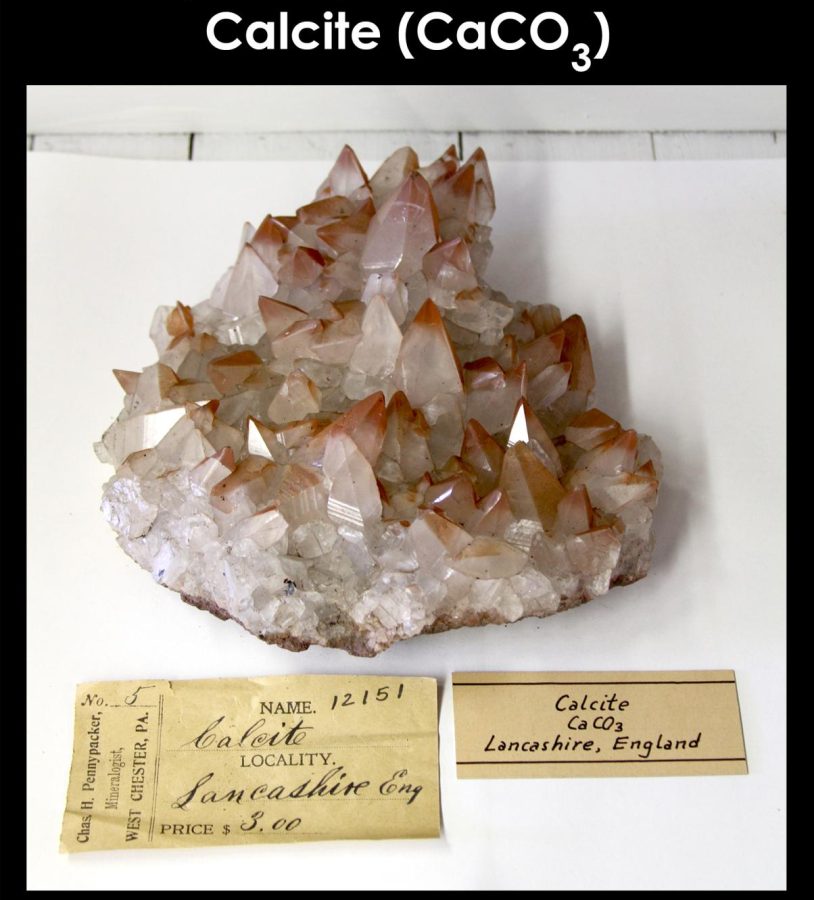Viking “Sólarsteinn” Sunstones Used For Navigation – Iceland Spar

Calcite is a ubiquitous mineral found in most geological settings, and it is usually seen as an uninteresting gangue mineral in commercial mining. However, though most calcite is in the form of boring white masses or at best, white dull crystals, there is a form of calcite that is beautiful and also useful. It is Iceland spar, a highly transparent and well-crystallized form of calcite, but the most important fact about it is that it displays the optical properties of calcite well.
The term “Iceland spar” comes from the prolific output of the material from Helgustaðir (Helgustaðir) Mine in Eastern Iceland, though there are several other localities worldwide. The calcite from this mine was well-crystallized and easily cleaved, and it ultimately led to the serendipitous discovery of crystal unit cells, when mineralogist René Haüy accidentally dropped a piece on the ground. However, perhaps the most intriguing fact about Iceland spar throughout history is its possible use as a navigation tool of the Vikings.
During the Viking Age of 800 to 1050 A.D., the Vikings of Norway sailed across the northern European seas. They reached the Faroe Islands, Iceland, and Greenland, and they were the first to reach North America since native tribes crossed into Canada via Siberia. It is certain that all of this sailing could not have been fruitful if there was no effective navigation method, especially in a region like Scandinavia where the weather fluctuates unpredictably. It is known that they used a sundial in clear weather to determine the north direction, but it is still uncertain how they navigated in cloudy weather. The strongest current theory is the use of a “sólarsteinn(sunstone)” in navigation. It was mentioned in the Old Norse sagas, as a tool in sea navigation, that it was on par with a horse in terms of value. Though it is not fully confirmed, there is a great possibility that they did use the sunstones mentioned in the sagas, to navigate even in cloudy or foggy circumstances.
The important property of calcite in sunstones is birefringence. Birefringence is a property where when a single light ray known as the incident ray travels through the material, it gets split into two rays known as the ordinary beam and the extraordinary beam. These rays are polarized, meaning the light waves are restricted to only vibrate in the same direction.
If a Viking wanted to know the direction in bad weather, they would use a navigation method called sky-polarimetric navigation, which requires their Iceland spar sunstone. This is an excerpt from a Viking saga from the thirteenth century about an Icelandic hero, which shows how the Vikings were aware of the properties of the material:
“Olaf grabbed a Sunstone, looked at the sky and saw from where the light came, from which he guessed the position of the invisible Sun.”
The actual process of sky-polarimetric navigation is a complex series of calibration by looking at the sky and scratching marks on a sunstone. Once the direction of the sun has been determined, the Viking may use a torch and a reed to imitate a sunlight beam and determine north with a sundial. It is repeated several times throughout the journey to maintain a steady course. This method seems to have a high chance of success, and it only requires a sunstone, a sundial and a scratching tool. Note that birefringence is not unique to calcite, and other minerals with birefringence such as the tourmaline group or cordierite, being common in mainland Scandinavia, could have also been used as sunstones. However, since the process requires scratching the stone, Iceland spar is the still most likely material as it is the only candidate which may be scratched by steel tools, the hardest tools that were available to the Vikings.
The critical navigation tool that helped the Vikings conquer oceanic Northern Europe and Greenland may have been nothing more than an uncommon mineral mined in Iceland.
Sources/Related stories:
Helgustaðir Mine: https://www.mindat.org/article.php/190/Helgustadir+Iceland+Spar+Mine
More detailed explanation of the Viking sunstones: https://royalsocietypublishing.org/doi/10.1098/rstb.2010.0194
More detailed explanation of the Viking sunstones: https://www.researchgate.net/publication/266150685_The_sunstone_and_polarised_skylight_ancient_Viking_navigational_tools
The probability of successful travel using sky-polarimetric navigation: https://www.ncbi.nlm.nih.gov/pmc/articles/PMC5936938/pdf/rsos172187.pdf
A figure of the navigation: https://www.researchgate.net/figure/Three-main-steps-of-sky-polarimetric-Viking-navigation-A-step-1-estimation-of-the_fig1_263534839
Wikipedia article(Icelandic): https://is.wikipedia.org/wiki/Silfurberg











